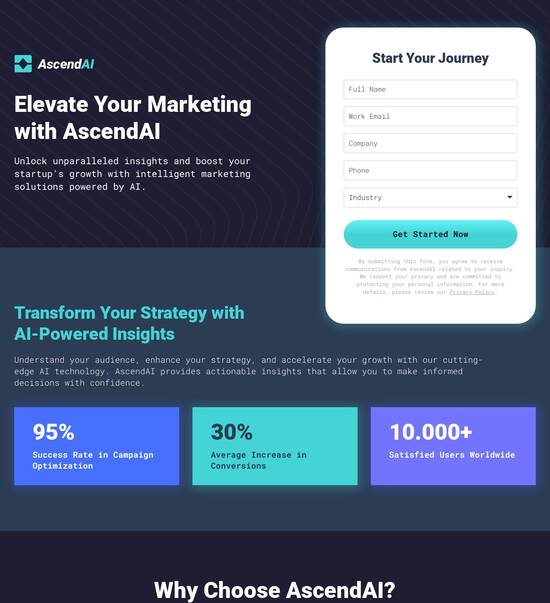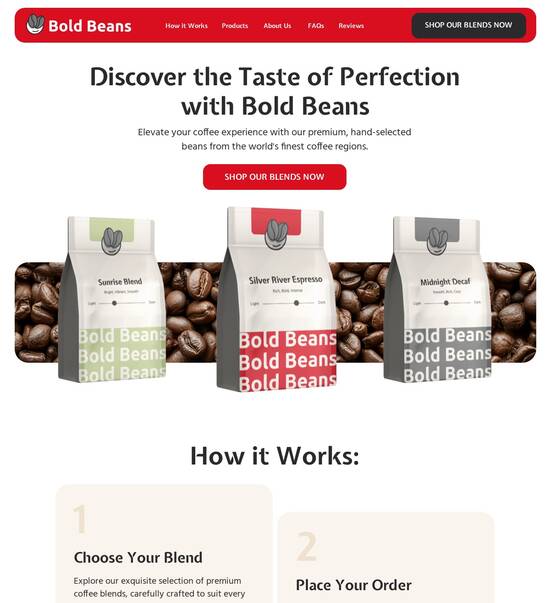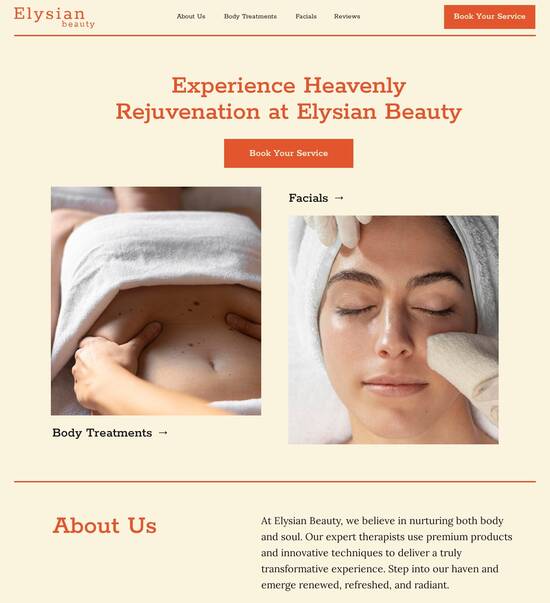
HTML page template for oil and gas companies
Use TemplateAbout template
Give your oil and gas companies a boost with our professional landing page templates. Ready to turn visitors into customers?
Recommended templates

Easy to build without coding
With the intuitive drag-and-drop builder, anyone on your team can create high-converting pages without any knowledge of code or design. Make enhancements to your landing page with custom widgets using Javascript, HTML/CSS, or third-party scripts.

Multiple layouts for any industry and goal
Select from 500+ landing page layouts built to boost conversions across industry-specific scenarios. Customize them by adjusting fonts, adding images, and generating on-brand content with the AI assistant. Quickly scale with Instablocks® and Global Blocks that you can save, reuse, and update globally.

Loads fast and looks polished on any device
Every template is responsive, which means they present professionally on any device and load blazingly fast with our Thor Render Engine. You can also power them up with Google AMP technology to deliver an unparalleled mobile experience and drive higher conversions.

Robust analytics & experimentation
Get real-time updates and reporting across all your devices, showing the number of visitors, conversions, cost-per-visitor, and cost-per-lead. Launch AI-powered experiments, run A/B tests, and use heatmaps to analyze user behavior, then optimize your landing page to maximize conversions.







Easy to build without coding
With the intuitive drag-and-drop builder, anyone on your team can create high-converting pages without any knowledge of code or design. Make enhancements to your landing page with custom widgets using Javascript, HTML/CSS, or third-party scripts.
Multiple layouts for any industry and goal
Select from 500+ landing page layouts built to boost conversions across industry-specific scenarios. Customize them by adjusting fonts, adding images, and generating on-brand content with the AI assistant. Quickly scale with Instablocks® and Global Blocks that you can save, reuse, and update globally.
Loads fast and looks polished on any device
Every template is responsive, which means they present professionally on any device and load blazingly fast with our Thor Render Engine.
Robust analytics & experimentation
Get real-time updates and reporting across all your devices, showing the number of visitors, conversions, cost-per-visitor, and cost-per-lead. Launch AI-powered experiments, run A/B tests, and use heatmaps to analyze user behavior, then optimize your landing page to maximize conversions.
All the features you need to build oil and gas website design
Explore more featuresLearn how to build best oil and gas website design
Frequently asked questions about web design oil and gas
Leading the way in building high-performing landing pages





Oil and gas website design development: Your ultimate how-to guide
Instapage is recognized as the most powerful platform for creating high-converting landing pages, equipping marketers with the tools necessary to elevate their digital marketing campaigns. Whether you're in business services, tech, or education, launching optimally designed and targeted pages is essential for maximizing ROI. Our guide will provide you with a comprehensive process to leverage Instapage to its fullest potential.
Understanding the importance of landing pages
A landing page serves as a conduit for conversions, playing a crucial role in attracting and retaining potential customers. It holds the power to engage prospects effectively, turning clicks into leads and leads into sales.
- Enhances focus: Landing pages strip away distractions, encouraging visitors to act on a single call-to-action (CTA).
- Maximizes ad performance: Highly-targeted landing pages increase relevancy, leading to improved Quality Scores within Google Ads.
- Boosts conversion rates: Tailored content on dedicated pages significantly improves the chances of conversion in digital marketing.
Step 1: Selecting high-converting templates
Identifying a suitable template is your first step toward creating an impactful landing page. Instapage provides over 100 ready-to-use templates designed for high conversion rates.
- Choosing industry-specific templates: Select designs that resonate with your target audience, e.g., education, financial services.
- Customizing elements: Adapt colors, images, and text to reflect your brand while maintaining message clarity.
- Optimizing for mobile: Ensure your selected template is responsive, catering to users across devices.
Step 2: Utilizing optimization features
After your landing page is set up, optimization is vital for boosting performance. Use built-in testing and analytics tools to assess page effectiveness.
- Heatmaps: Analyze user interaction on your page to see what elements capture attention.
- A/B testing: Test different variations of your page to identify which ones perform better and why.
- Analytics dashboards: Monitor real-time performance data to adapt strategies accordingly.
Step 3: Personalizing content for conversion
Personalization can turn a good campaign into a great one. Leveraging dynamic text replacement and audience segmentation allows you to present tailored content.
- Dynamic content: Change text and visuals based on the visitor's previous interactions or demographics.
- Audience-specific landing pages: Align your ads to specific pages catered to distinct audience segments.
- Performance tracking: Utilize tools to measure how well your personalized pages drive conversions compared to generic pages.
These steps outline your path toward successful use of the Instapage landing page and CRO platform. Proper application of these strategies can lead to measurable improvements in your digital marketing campaigns.
Ready to transform your marketing efforts? Start using Instapage's powerful templates and features today to create stunning landing pages that convert.
HTML page template for oil and gas companies
Understanding the importance of web presence in the oil and gas sector
A robust online presence has become increasingly essential for organizations within the oil and gas sector. In recent years, statistics indicate that nearly 70% of business-to-business buyers in this industry engage with online content prior to making purchasing decisions. This shift in behavior underscores the need for oil and gas companies to convey transparency and valuable information through their websites to build trust and credibility among stakeholders.
Key objectives for oil and gas websites revolve around informing stakeholders and investors, attracting potential clients and partners, and ensuring compliance with industry regulations. By providing a centralized platform where stakeholders can access information about corporate initiatives, compliance standards, and project updates, companies can foster a sense of trust and reliability.
Essential elements of an HTML page template for oil and gas companies
When creating an HTML page template specifically for oil and gas companies, there are several core features to consider. Firstly, a responsive design ensures compatibility across mobile and desktop devices, which is vital in today’s multi-device environment. This adaptability allows users to navigate anywhere without hindrance, thus enhancing their experience.
Furthermore, optimizing the layout for easy navigation is crucial. A well-structured menu should lead visitors to various sections like services, news, and project showcases. Sectioning content areas not only helps in presenting information clearly, but also helps in user retention.
Responsive design for comprehensive device compatibility.
Optimized layout for effortless navigation.
Content sections for services, latest news, and project showcases.
For branding, integrating company logos, specific color schemes, and imagery throughout the design is vital. Emphasizing professionalism and reliability in design choices not only enhances brand perception, but also communicates the company's commitment to quality and stability in a volatile industry.
Technical underpinnings of HTML templates
Understanding the role of HTML in web development is foundational for any effective website design. HTML, or HyperText Markup Language, serves as the structure for web pages and is integral to presenting content across the internet. The primary advantage of using HTML templates lies in their cost-effectiveness and time-saving benefits compared to custom-built pages, making them an invaluable resource for small to mid-sized oil and gas companies.
A successful HTML template incorporates key building blocks such as essential tags and attributes, which preserve structural integrity. Additionally, integrating multimedia elements—like images, videos, and slideshows—enhances user engagement and delivers an informative website experience, especially crucial for complex industries like oil and gas.
Key features of a custom HTML page template
Implementing dynamic content loading using the `DOMContentLoaded` event is a crucial aspect of any modern HTML template. This event fires when the initial HTML document is fully loaded and parsed, allowing for efficient content loading. This optimizes user experience by ensuring that content is available almost immediately, preventing frustrating waits.
Moreover, using `document.addEventListener` enhances interactivity across the website. By listening for various types of events—such as clicks, scrolls, and input actions—companies can create a more engaging experience for their users. For example, integrating features like live chat support or interactive maps can significantly improve visitor interaction.
`DOMContentLoaded` ensures quick content availability.
`document.addEventListener` enables effective interactivity.
Commonly used events include click, scroll, and input.
SEO practices tailored for oil and gas companies
Search Engine Optimization (SEO) is crucial for any oil and gas website aiming to improve its online visibility. Optimizing HTML for search engines begins with focusing on metadata—titles, descriptions, and keywords. By ensuring that these elements align with the content, organizations can significantly boost their search rankings.
Furthermore, mastering the structure and hierarchy of content is essential. Using headings and lists effectively helps search engines crawl the website more efficiently, improving overall visibility and engagement. Creating valuable content tailored to the audience can not only drive traffic but also establish authority within the industry, making it a best practice for oil and gas companies.
Crafting engaging visuals and multimedia elements
Strong visual content plays a transformative role in enhancing user engagement for oil and gas websites. The sector often deals with technical processes, making high-quality images and graphics particularly impactful for communicating complex information. Infographics, for instance, help explain intricate workflows and operational processes, aiding visitor comprehension.
Moreover, integrating videos adds another layer of engagement. Utilizing videos for project showcases, testimonials, and educational content leaves a lasting impression. Best practices for embedding videos include using service providers that allow for seamless integration, ensuring that the videos load quickly, and that they are optimized for all devices.
Compliance and security features for industry websites
For oil and gas companies, adhering to relevant regulations is paramount. Compliance with international standards set forth by organizations such as OSHA and the EPA helps mitigate legal risks and enhances corporate responsibility. Transparency in reporting and communication with stakeholders is also crucial, as it fosters an environment of trust.
In addition to compliance, robust security features are essential for protecting user data and privacy. Implementing HTTPS ensures secure communication between the user’s browser and the website, while secure forms help protect data input. Regular vulnerability assessments should also be conducted to identify and address potential security risks.
Future trends in HTML templates for oil and gas companies
An increasing focus on sustainability is shaping the design of HTML templates for oil and gas companies. Templates are being developed to emphasize eco-friendly messaging and showcase sustainability initiatives and corporate social responsibility efforts. This approach not only appeals to environmentally conscious stakeholders but can also set a company ahead of its competitors.
Moreover, embracing innovation through emerging technologies is vital. As augmented and virtual reality gain traction, integrating such technologies into templates can provide immersive experiences for visitors. Additionally, utilizing AI-driven analytics helps personalize user engagement by adapting content based on visitor behavior and preferences.
Comparison of available HTML template solutions
When evaluating HTML template solutions for oil and gas companies, a key consideration is the decision between pre-built and custom templates. Pre-designed templates offer convenience and speed, but may lack the flexibility to meet unique business needs. Conversely, custom development requires more time and resources but can provide tailored solutions that align perfectly with a company’s goals.
Showcasing popular template providers can aid companies in making informed decisions. Reviewing features, pricing, and user feedback from leading platforms allows businesses to select the template best suited to their operational requirements and marketing objectives.
User experience techniques to enhance website performance
Implementing user experience (UI/UX) best practices remains vital for oil and gas websites. Streamlining navigation and enhancing usability should be paramount, as complex information can often lead to frustration. Establishing a mobile-first design principle also enhances accessibility, ensuring potential clients and stakeholders can engage with the company's content at their convenience.
Conducting A/B testing as part of ongoing website optimization efforts can lead to significant improvements. This technique involves testing different versions of website elements, such as headlines, call-to-action buttons, and layouts, to identify which variations perform best. Analyzing user behavior during these tests allows companies to make data-driven decisions that lead to higher engagement rates.
Closing thoughts
Leveraging a well-structured HTML page template for oil and gas companies plays a crucial role in establishing a powerful online presence. An innate understanding of the industry, coupled with technical and design proficiency, can significantly enhance stakeholder engagement and business growth.
Ready to skyrocket conversions?
Supercharge your ad campaigns with high-performing landing pages
Get started














